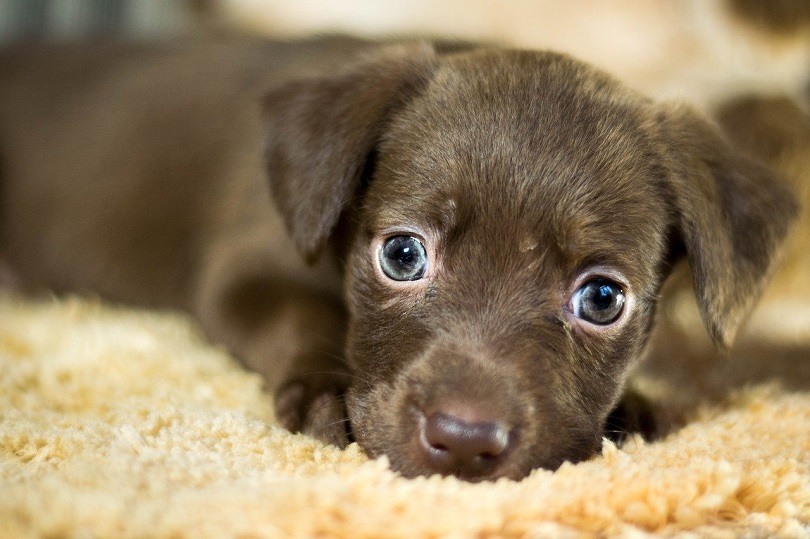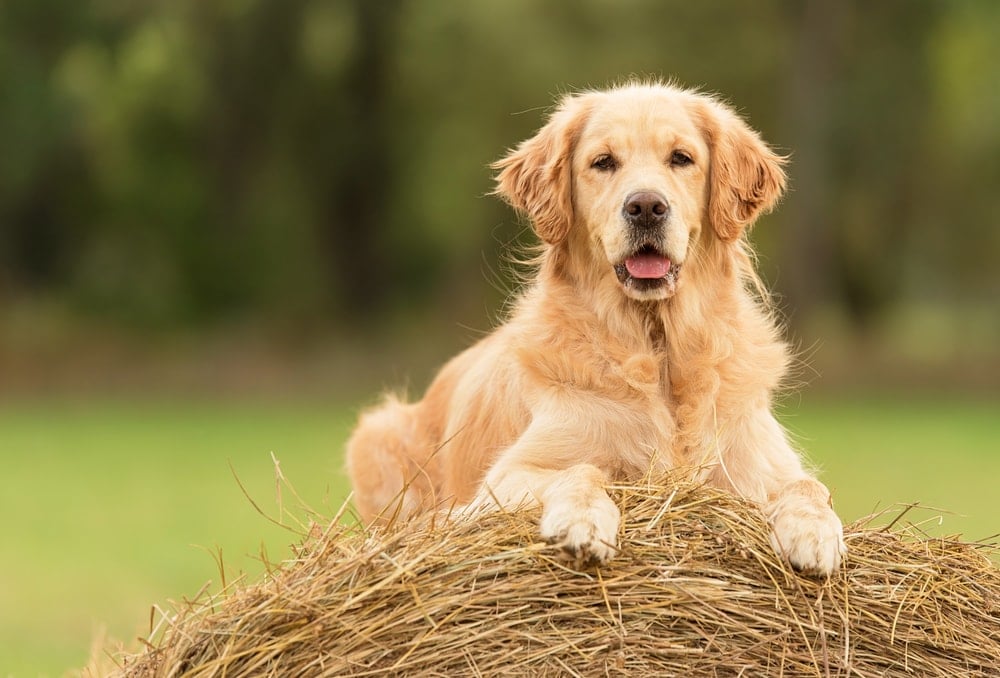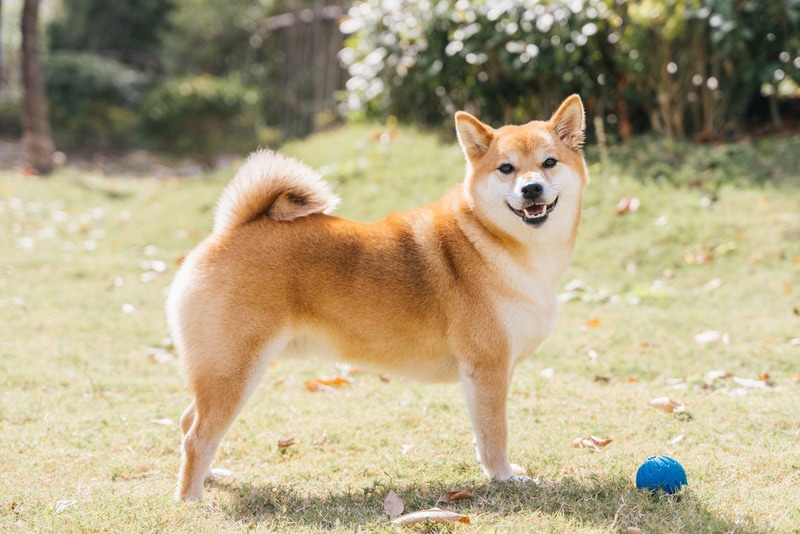What Causes Dilated Pupils in Dogs? Vet-Reviewed Facts & FAQ

Updated on
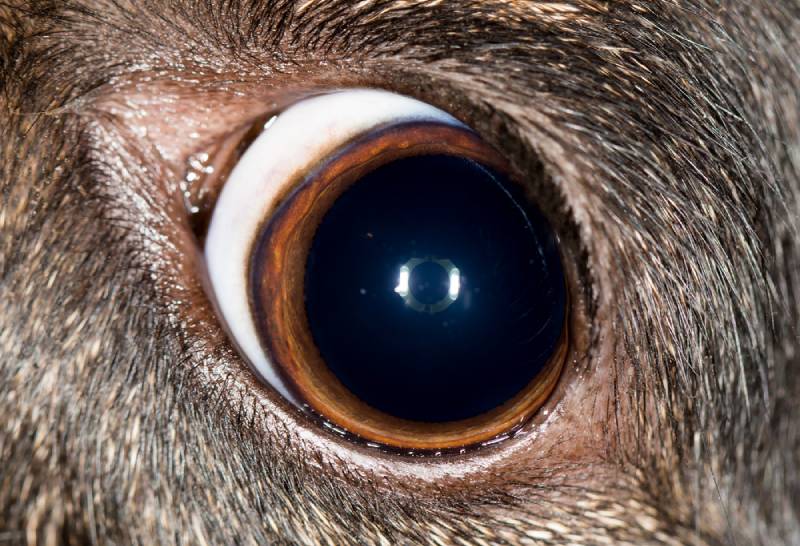
Click to Skip Ahead
Very few things are as heart-warming as a pup with beautiful wide open eyes looking at you with affection. The same can’t always be said about dilated pupils, though. While it might be caused by excitement, sometimes, it’s triggered by fear, stress, and pain, or a medical condition such as poisoning, infection, or a severe eye problem like glaucoma.
So, how worried should you be about it, exactly? How do you know that the dog does, indeed, have dilated pupils? Can you try and fix this issue by yourself, or should you seek immediate medical attention for the four-legged bud? In this article, we’ll go over the very definition of pupil dilation, the most obvious signs, causes, and tried-and-true remedies.
What Is Pupil Dilation in Dogs?
The pupil is the black “dot” or “hole” in the middle of your dog’s iris (the colored part of the eye). The term “mydriasis” is used to describe a scenario when the pupils become abnormally large. In normal circumstances, the pupils get bigger and smaller all the time. This is the eye’s natural response to changes in light intensity. The stronger the light, the narrower the pupils get, and vice versa. So, if your dog gets back home after a long run outside late at night, their pupils will “shrink” to adjust to above-average brightness levels.
Also, it doesn’t always happen in both eyes at the same time. Mydriasis can be bilateral or unilateral, but in normal circumstances, both pupils are the same size. If dilation is a response to dim light, emotions, or a mental state like fear or excitement, the pupils will dilate and constrict (go back to their regular size) evenly and swiftly. However, if mydriasis appears only in one eye, it is mostly caused by an eye condition, and generally speaking, the pupil will stay dilated for a long time and won’t be affected by changes in light.
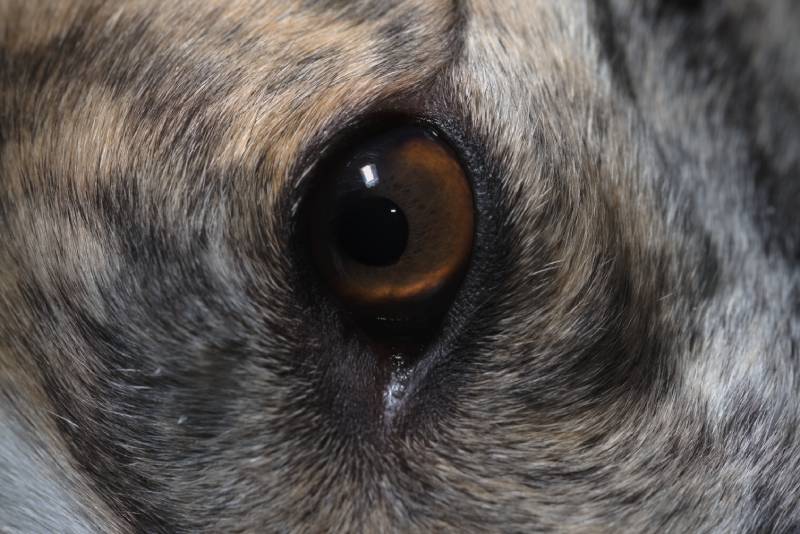
What Are the Signs of Dilated Pupils?
Enlarged black dots are, of course, the most obvious sign here. It might be very obvious in blue-eyed dogs but not so much in dark-eyed dogs. However, for the average dog owner, it can be a bit tricky to figure out whether it’s just a normal reaction or something to worry about. If the pupils only change in size to adjust to the light, that’s great news, since that’s the way it should always be! If you shine a bright light into your dog’s eyes, their pupils should constrict. If this doesn’t happen, you need to contact your vet.
This is important: mental responses like anxiety, fear, and excitement can all be causes of dilated pupils. So, you may notice behavioral changes alongside your dog’s dilated pupils. The same goes for discomfort. Do you see that your dog isn’t comfortable, yet also doesn’t whine, bark, or run circles around you? Take a quick look at their eyes: most likely, the pupils are going to be dilated.
What Are the Causes of Dilated Pupils?
Transient mydriasis can be triggered by emotions and feelings or specific physiological changes. For example, when a canine’s pupils are dilated, that can be caused by stress, anxiety, some sort of discomfort, or tension. Or it could be that the mydriasis is caused by fear or pain. While dogs are much better at expressing their feelings, they don’t always show it when they’re hurting. Therefore, if you’re noticing that their pupils are larger than usual, chances are good that the dog is in pain.
Thankfully, dilation is not only associated with bad emotions. Quite often, it can be caused by arousal, excitement, and other positive things. Something that catches the fur buddy off-guard and surprises it might also make the pupils get bigger. Older dogs sometimes develop iris atrophy, and while this is generally nothing to worry about, your vet is the professional that can let you know what’s causing your dog’s pupils to remain dilated.
Sadly, the list of potential causes also includes serious injuries to the dog’s eyes, head, or brain. And then we have poisoning, eye diseases, and infections.
- Various eye diseases. PRA (progressive retinal atrophy, an eye disorder that leads to blindness), iris atrophy, glaucoma (increased pressure inside the eye), and eye cancer (uncontrolled tissue growth) are the most common eye diseases that cause not only dilation of pupils but other ocular signs. PRA and glaucoma are both conditions that cause blindness.
- Poisoning. Certain drugs and plants can cause bilateral mydriasis when dogs have access to them accidentally. Antidepressants, amphetamines, nicotine, and marijuana poisoning can cause mydriasis. The same goes for sago palms and Golden angel’s trumpet (Brugmansia spp.).
- Infections. Rabies is a rare disease among dogs, thanks to widespread vaccinations. However, when infected, the dog will become seriously ill. They may become more aggressive and experience severe neurological signs such as seizures. Botulism can also cause the pupils to dilate, alongside other serious neurological signs. Dogs become affected by it when they eat spoiled food and the toxins produced by the bacteria Clostridium botulinum target their nerves.
- Other causes. Myasthenia gravis, a condition in which the transmission between the nerves and muscles does not work normally, can cause mydriasis. Some canines get partial paralysis after a certain type of tick bite, which leads to dilated pupils, and seizures are a problem associated with dilated pupils. In all these cases, dogs will present with other, much more obvious clinical signs than mydriasis.
How Do I Care for a Dog with Dilated Pupils
The treatment will be dictated by the underlying cause. The first thing you will do is to speak to your vet as soon as you notice an uneven size or abnormal function of your dog’s pupils. So, before you make any decisions, talk everything over with a licensed veterinarian to learn about the available options. The clinic will use a thorough ophthalmic exam, take “pictures” of the pup (we’re talking about diagnostic imaging), and even take blood samples to find the right solution. This will take some time: don’t rush the vets!
With the initial examination, your vet might be able to rule in or out most eye problems like glaucoma, PRA, or iris atrophy. If your dog is displaying other signs, which is often the case with poisoning, infections, and neurological problems, the doctors may recommend hospitalization to provide extensive treatment, monitor the patient 24/7, and perform any necessary tests.

Frequently Asked Questions (FAQs)
How dangerous are dilated pupils for a dog?
This greatly depends on what’s causing the pupils to dilate. If it’s a result of spikes and dips in light intensity, you won’t have to take any action, as that’s an expected normal reaction of the pup’s pupils. If the dilation is caused by emotions or mental stimulations, you should not be concerned, either. In the worst-case scenario, mydriasis can be caused by an eye problem, an injury, a neurological disease, or an infection. .
So, every single case is different. If you’re the proud owner of a lively, upbeat pup that gets easily excited or stressed and gets dilated pupils, this will go away once they calm down. In contrast, if your pup’s pupils remain dilated once they’ve calmed down, you should seek medical attention. Are you noticing other issues like vomiting, drooling, or trouble walking? Get the dog to a vet ASAP. Paying a quick visit to a trusted animal doctor will give you peace of mind and help tackle any potential issues.
What if only one of the pupils is dilated?
When a dog’s pupils are an uneven size, it is called anisocoria. At first glance, it might be difficult to know which eye is the abnormal one. Sometimes the outer surface of the affected eye can be cloudy or have a bluish hue. In other cases, you’ll also notice that the part of the eye that’s usually white (the sclera) is bright red. In a severe case, there will be vision loss and discharge from the dilated pupil, and the dog will constantly rub that one eye. This can be caused by a brain injury, ulcer, uveitis, glaucoma, retinal disease, or even cancer.
Lethargy/lack of energy might also accompany anisocoria. If you notice any of these signs, take the fur baby to a veterinarian for a thorough checkup. They’ll run a series of tests and find the right solution.
Conclusion
Just like cats, dogs sometimes have dilated pupils. If it is associated with fear, discomfort, or excitement, there’s no reason to sound the alarm, since this is considered a normal body reaction. It could very well be that the dog is very excited about something (like a delicious snack or a new furry friend) and that’s what’s making the pupils dilate. If, on the other hand, your dog’s pupils do not return to normal size once they calm down, or your dog is showing other signs such as vision loss, incoordination, or weakness, make sure you contact your vet ASAP.
- See also: Why Do Dogs Wink? 4 Potential Reasons
Featured Image Credit: schankz, Shutterstock




